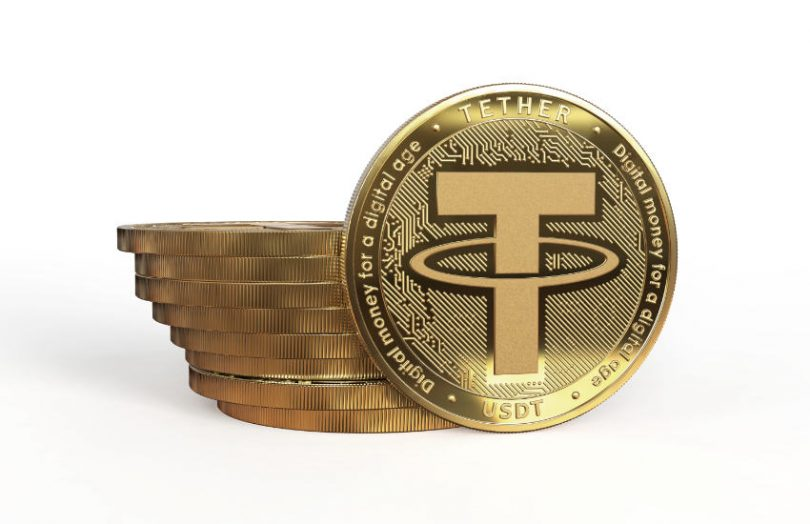On March 27, 2025, Tether, the issuer of the world’s leading stablecoin USDT, revealed plans to explore launching a U.S.-native stablecoin, aiming to align with the evolving regulatory environment in the United States. This development coincides with heightened legislative efforts to regulate stablecoins, as bills like the STABLE Act gain momentum in Congress. Tether’s potential introduction of a Tether U.S. stablecoin signals a strategic shift to meet U.S. crypto regulations, ensuring its continued dominance in the $233 billion stablecoin market, where USDT commands a 60% share as of early 2025.
Adapting to U.S. Regulatory Demands
Tether’s consideration of a U.S.-based stablecoin comes after months of engagement with U.S. lawmakers. Discussions on X highlight Tether’s interactions with Representatives Bryan Steil and French Hill, who co-sponsored the STABLE Act, introduced on February 6, 2025. The proposed law requires stablecoin issuers to maintain a 1:1 reserve ratio backed by U.S. dollars and undergo monthly third-party audits. Tether, long criticized for its opaque reserve practices since its 2014 launch, seems to be responding proactively to these requirements to strengthen its position in the U.S. market.
USDT currently operates across blockchains like Ethereum, Tron, and Solana, with a circulating supply exceeding 142 billion tokens. Based in the British Virgin Islands, Tether’s reserves—comprising U.S. Treasuries, Bitcoin, and other assets—have faced scrutiny. A February 2025 JPMorgan analysis found that just 66% to 83% of Tether’s reserves meet proposed U.S. standards. This shortfall could force Tether to liquidate its $8 billion Bitcoin holdings. A U.S.-native stablecoin could resolve these issues by adhering to local regulations, ensuring fully compliant reserves and transparent audits.
Strategic Benefits and Market Positioning
Launching a U.S.-based stablecoin could redefine Tether’s role in global finance. CEO Paolo Ardoino has consistently stressed USDT’s role in bolstering U.S. dollar dominance, serving over 400 million users, especially in developing economies. In a February 2025 Bloomberg interview, he claimed USDT’s global adoption enhances the dollar’s influence, pushing back against Circle’s calls for tighter oversight of foreign stablecoins. A U.S.-based token would enable Tether to compete directly with USDC, which operates under U.S. regulations with $34 billion in reserves.
This initiative reflects broader trends in the stablecoin sector. In February 2025, Bank of America unveiled plans to introduce its own stablecoin, underscoring digital currencies’ growing presence in traditional finance. Likewise, World Liberty Financial, tied to former President Donald Trump, announced in October 2024 its intention to launch a stablecoin, reflecting increasing demand for regulated digital assets. Tether’s U.S. token could leverage its infrastructure—spanning 13 blockchains, including recent integrations with Polkadot and Avalanche—to offer a compliant option for American users and institutions.

Navigating Challenges in a Competitive Market
Despite the potential, 2025 stablecoin laws pose significant challenges for Tether. The STABLE Act and the GENIUS Act, now under Senate review, introduce strict regulations. These include licensing, risk management, and reserve transparency. Tether’s past regulatory troubles add to compliance concerns. In 2021, the CFTC and New York authorities fined Tether $61 million for reserve discrepancies. Additionally, an October 2024 Wall Street Journal report revealed ongoing U.S. federal investigations. Authorities are probing Tether for possible anti-money laundering and sanctions violations. However, CEO Paolo Ardoino dismissed these claims as “recycled rumors.”
Competition is also intensifying. Circle’s USDC, with a $34 billion market cap, has positioned itself as a compliant alternative, while new players like StablR, supported by Tether’s investment in December 2024, are expanding regulated stablecoin offerings in Europe under the EU’s MiCA framework. Tether must balance its Tether compliance strategy to meet U.S. standards without alienating its global user base.
Conclusion
Tether’s exploration of a U.S.-native stablecoin marks a critical juncture for the company and the crypto industry. By adapting to U.S. crypto regulations, Tether aims to maintain its market leadership amid 2025 stablecoin laws. Yet, regulatory hurdles, competitive pressures, and its controversial past could complicate this shift. As the stablecoin market evolves, Tether’s actions will likely shape the trajectory of digital finance in the U.S. and globally.




